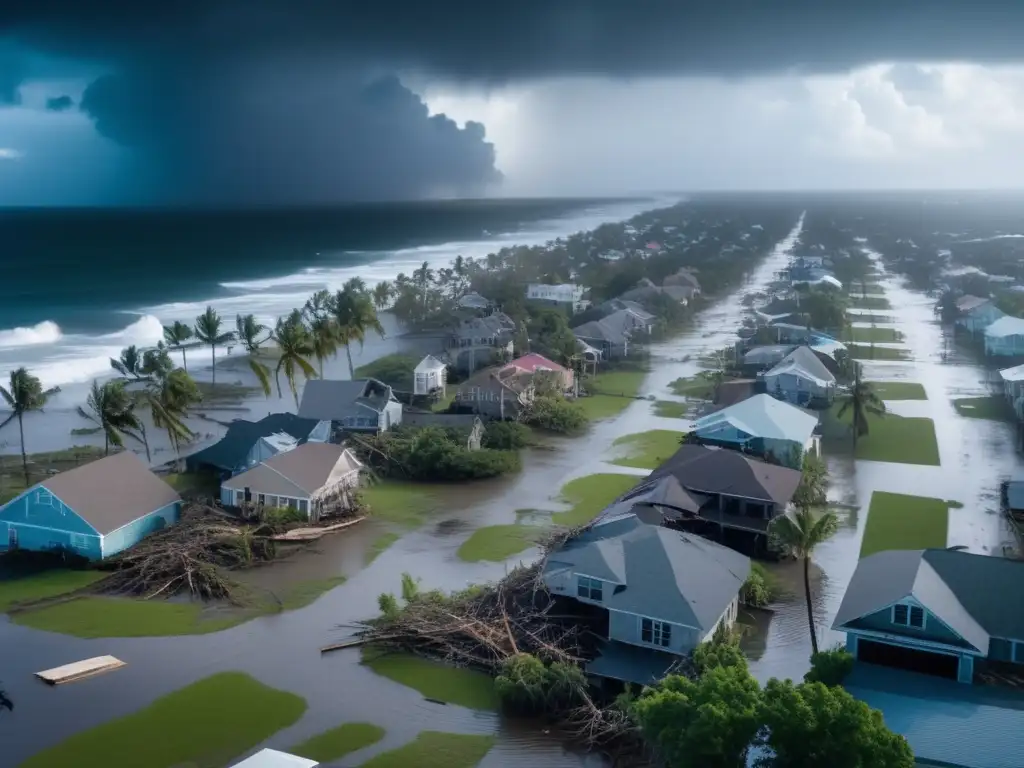Technological Innovations In Hurricane Prediction

Technological Innovations in Hurricane Prediction: Understanding the Latest Advances
Introduction
Hurricanes are some of the most devastating natural disasters that can occur, often resulting in loss of life and catastrophic damage to property. As such, predicting them, tracking their paths, and studying their behavior is of utmost importance. Advanced technology has made significant contributions in improving hurricane prediction over the years, with innovative approaches that were once thought impossible now being commonplace.
In this article, we will explore some notable technological innovations in hurricane prediction, how they work, and their impact on predicting this natural phenomenon. We will also discuss how these innovations help residents and governments better prepare for and respond to hurricanes.
Advanced Weather Satellites for Precise Storm Tracking

The Role of Weather Satellites in Hurricane Prediction
Advanced weather satellites play a critical role in helping meteorologists track hurricanes’ locations and movements. This capability is done through collecting data on temperature, moisture, and wind currents in different parts of the storm and atmosphere.
Satellites offer an overarching view and timeline of hurricane activity, helping experts gain greater insight into when and where the storm might make landfall, how intense it could be, and what areas will be affected. Over the years, the sophistication of these satellites has grown, providing more precise measurements, improved forecasting models, and real-time updates.
The Benefits of Advanced Weather Satellites
Advanced weather satellites have revolutionized hurricane prediction, enabling meteorologists to provide earlier and more accurate warnings to residents of coastal regions. These warnings allow people to evacuate or prepare for severe weather, mitigating the damage caused by these storms. Satellite imagery can also provide insights on potential flooding, high winds, and other related hazards associated with hurricanes.
Furthermore, advanced satellites help with post-hurricane recovery efforts. With a better understanding of the storm's path and impact, emergency responders can more quickly and efficiently respond to affected areas, prioritizing resources where they are most needed.
Enhanced Computer Modeling of Hurricanes

How Computer Modeling Works in Hurricane Prediction
The complexity of predicting hurricanes has increased over the years, and scientists have turned to advanced computing models to help solve this problem. These models use algorithms to simulate the behavior of storms, taking into account various environmental factors like air temperature, wind shear, and ocean currents.
With these models, predictions can be made on how much rainfall will fall, how strong winds will be, and the possible trajectory of the hurricane. Meteorologists rely on multiple models, considering numerous factors that could influence the storm's intensity or direction, to provide the most accurate forecast.
The Benefits of Enhanced Computer Modeling
Enhanced computer modeling helps meteorologists predict the exact path and possible intensity of hurricanes, providing critical information for residents and emergency responders. By using these models, it is now possible to create visual simulations of the storm's impact and potential damage, allowing states and communities to better prepare for the aftermath of strong hurricanes.
In addition, computer models can provide insight into other related weather phenomena, such as high waves and flooding, which could cause significant damage to cities and towns along the coast. This knowledge allows officials to prepare and enact measures that can save lives and property.
Drones and other Technologies for Improved Storm Observation

The Role of Drones in Hurricane Prediction
Drone technology has seen massive growth in recent years, and they are now being used to gather data on hurricanes. These drones fly directly into the heart of the storm, taking measurements of the wind speed, temperature, and humidity. This kind of data provides valuable insight into the storm's intensity, allowing meteorologists to make more precise predictions on its impact.
Additionally, drones can provide real-time observations of hurricane activity, allowing meteorologists to create more accurate models and fine-tune their forecasts. These unmanned aerial vehicles are also useful for evaluating damage to coastal structures, bridges, and roads after a severe hurricane.
The Benefits of Drones and Other Technologies for Improved Storm Observation
Technology like drones and other sensors offer an unprecedented level of observation of hurricanes, providing insights that were once impossible to obtain. With this data, meteorologists can make informed decisions on how to respond to the storm, from issuing warnings to evacuating residents in high-risk areas.
Drones also allow officials to assess damage and prioritize resources for recovery after a hurricane. As such, these technologies have revolutionized our ability to mitigate the damage caused by hurricanes and, more importantly, saved lives.
Frequently Asked Questions

-
How do advanced satellites help with hurricane prediction?
Advanced weather satellites help track hurricanes and collect vital data on temperature, moisture, and wind currents in different parts of the storm and atmosphere. This data provides critical information for meteorologists to make more accurate predictions.
-
How do computer models enhance hurricane prediction?
Computer models use algorithms to simulate the behavior of storms and take into account environmental factors like air temperature, wind shear, and ocean currents. This helps provide more precise information on storm intensity, trajectory, and possible damage.
-
What is the role of drones in hurricane prediction?
Drones fly directly into the heart of a storm and collect data on wind speed, temperature, and humidity. This data provides valuable insight for meteorologists to make more precise predictions about the storm's impact.
-
Is it possible to predict hurricanes with 100% accuracy?
No, predicting hurricanes is a complex process that involves numerous environmental factors that can change rapidly. However, advanced technology has significantly improved our ability to predict and track hurricanes, allowing for better preparation and mitigation of their damage.
-
What can people do to prepare for a hurricane?
People living in hurricane-prone areas should stay informed about the potential for a hurricane, have an emergency plan in place, and assemble an emergency kit containing essentials such as water, food, and medication. They should also be ready to evacuate if necessary and keep track of local weather advisories.
Conclusion
The technology used for hurricane prediction has come a long way, with the latest advancements providing unprecedented insight into the behavior of storms. From advanced weather satellites to computer modeling, drones, and other innovative technologies, these tools have revolutionized our ability to predict and track hurricanes, providing critical information that saves lives and protects property.
For those living in hurricane-prone areas, staying informed about the latest technological innovations in hurricane prediction is essential. By doing so, they can take proactive measures to prepare for and reduce the impact of severe storms. Platforms like HurricaneInsider.org offer a wealth of information and resources to help residents stay informed and safe during hurricane season, underscoring the importance of staying up-to-date on the latest technological advancements related to hurricanes.
Additional Resources

 The Role Of Mangroves In Protecting Coasts From Hurricanes
The Role Of Mangroves In Protecting Coasts From Hurricanes Climate Change And Its Impact On Hurricanes
Climate Change And Its Impact On Hurricanes The Effects Of Hurricanes On Coastal Ecosystems
The Effects Of Hurricanes On Coastal EcosystemsIf you want to discover more articles similar to Technological Innovations In Hurricane Prediction, you can visit the Basic knowledge about hurricanes: category.
Leave a Reply

Articulos relacionados: